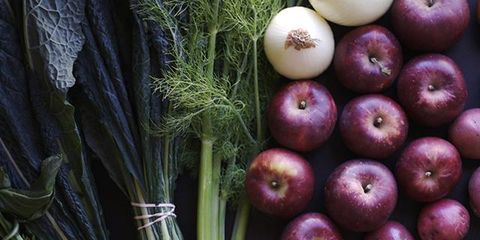Sinful Nutrition Where Every Veggie Has a Dark Side
Sinful Nutrition Where Every Veggie Has a Dark Side. They’re good for us, they’re packed with nutrients, and they help keep us healthy. But did you know that not all veggies are created equal? In fact, some of them are downright sinful. In this blog post, we will explore the dark side of some of your favorite vegetables. From the pesticides they’re sprayed with to the toxic chemicals they absorb, you may want to think twice before you reach for that next carrot or celery stick. So read on and learn the dirty secrets of your favorite veggies. You may never look at them the same way again.
The Dark Side of Veggies
Vegetables are often lauded for being healthy and nutritious, but did you know that many of them have a dark side? That’s right, even the most innocent-looking vegetables can be hiding some pretty sinister secrets.
So, what are some of the dark sides of veggies? For one, many vegetables are high in sugar. While this might not seem like a big deal at first, it can actually lead to some serious health problems down the road. Consuming too much sugar can lead to weight gain, diabetes, and even heart disease.
Another issue with vegetables is that they often contain harmful chemicals and pesticides. These chemicals can be absorbed by the body and potentially cause a whole host of health problems. Pesticides have been linked to cancer, birth defects, and neurological disorders.
Finally, some vegetables may also contain harmful toxins that can make you sick. For example, certain types of mushrooms can contain toxins that can cause liver damage or even death. So, before you go chowing down on that veggie platter, make sure you know what you’re getting yourself into!
The Different Types of Sinful Veggies

There are many different types of “sinful” veggies, each with its own dark side. Here are some of the most common:
–Tomatoes: Tomatoes are often cited as being acidic and causing heartburn. However, they are also a good source of lycopene, which has been shown to reduce the risk of some cancers.
–Potatoes: Potatoes are often demonized for their high starch content. However, they are also a good source of vitamins, minerals, and fiber.
–Corn: Corn is often vilified for its high sugar content. However, it is also a good source of antioxidants and has been linked with lower risks of some chronic diseases.
–Peppers: Peppers are often criticized for being spicy and causing indigestion. However, they are also a good source of vitamins A and C, as well as other nutrients.
The Pros and Cons of a Sinful Veggie Diet
When it comes to nutrition, there are a lot of different schools of thought out there. Some people believe that everything in moderation is key, while others subscribe to the idea that certain foods are just plain bad for you – no matter how much or how little you eat.
If you fall into the latter camp, then you might want to consider a sinfully veggie diet. This type of diet focuses on eating vegetables that are typically considered to be unhealthy, such as tomatoes, potatoes, and eggplants. While there are some pros to this type of diet – like getting more vitamins and minerals – there are also some cons that you should be aware of before you make the switch.
One of the biggest downsides of a sinfully veggie diet is that it can be hard to get enough protein. Since most vegetables are not high in protein, you’ll likely need to supplement your diet with other sources of this nutrient, such as meat or tofu. Additionally, some people might find it difficult to stick to a diet that eliminates so many food groups. If you have trouble limiting yourself, then this type of diet may not be right for you.
Before starting any new type of diet, it’s always important to speak with your doctor or a registered dietitian to make sure it’s safe for you and that you’re getting all the nutrients your body needs.
What Foods to Eat on a Sinful Veggie Diet?
A sinful veggie diet is one where you eat mostly vegetables, but also include some other foods that are high in fat and calories. This type of diet can be helpful for people who want to lose weight, but it’s important to make sure that you’re eating the right kinds of foods.
Here are some examples of foods that you can eat on a sinful veggie diet:
–Vegetables: Obviously, vegetables are the mainstay of this diet. You can eat as many vegetables as you want, but try to focus on ones that are lower in calories and higher in fiber. Some good options include leafy greens, broccoli, cauliflower, and tomatoes.
–Fruits: You can also enjoy fruits on this diet, but limit yourself to one or two servings per day. Fruits are higher in sugar than vegetables, so they shouldn’t make up the bulk of your meals. Choose fruits that are lower in sugar for the best results. Berries and citrus fruits are good options.
–Protein: Protein is an important part of any diet, and it’s especially important on a Sinful Veggie Diet since you’ll be cutting out other sources of calories. Choose lean protein sources like chicken, fish, tofu, and legumes. Eggs are also a good option if you’re looking for something quick and easy.
–Healthy fats: Healthy fats are essential in this diet since they help keep you full and satisfied. Include
Sinful Veggie Recipes
If you thought veggies were innocent, think again. These recipes take healthy vegetables and turn them into delicious, indulgent dishes that are sure to satisfy your cravings. From cheesy stuffed mushrooms to chocolate avocado mousse, these recipes prove that even the most virtuous foods can be sinfully delicious. So go ahead and indulge in these guilt-free recipes – your body will thank you for it!
Alternatives to the Sinful Veggie Diet
When it comes to nutrition, there are many different schools of thought. Some people believe that certain foods are “sinful” and should be avoided at all costs, while others believe that all foods can be part of a healthy diet.
The Sinful Veggie Diet is a popular fad diet that claims that all vegetables are bad for you and that you should only eat meat and processed foods. However, this diet is not based on any scientific evidence and is not sustainable in the long term.
If you’re looking for alternatives to the Sinful Veggie Diet, there are plenty of healthy and delicious options available. Here are a few ideas:
–The Mediterranean Diet: This way of eating focuses on fresh fruits and vegetables, whole grains, fish, and olive oil. It has been shown to improve overall health and reduce the risk of chronic diseases such as heart disease and cancer.
–The DASH Diet: This diet was designed to help lower blood pressure by reducing sodium intake. It includes plenty of fruits, vegetables, low-fat dairy, whole grains, poultry, fish, and nuts.
–Vegetarian or Vegan Diet: These diets emphasize plant-based foods such as fruits, vegetables, legumes, whole grains, and nuts. They can be very healthy options if done correctly. However, it’s important to make sure you’re getting enough vitamins and minerals from other sources if you choose to go vegetarian or vegan.
Conclusion
It’s important to be aware of the nutrient content of the foods you’re eating, even those that are typically considered healthy. While most vegetables are good for you, there are a few that have a dark side when it comes to nutrition. Be sure to check the labels on these veggies and limit your intake if you’re trying to watch your health closely.






